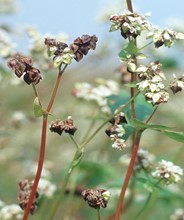
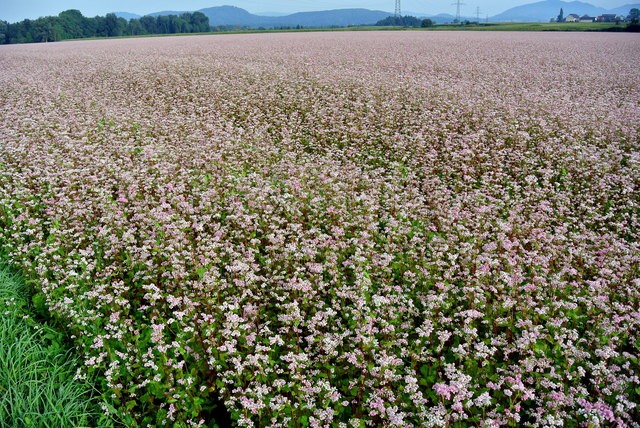
Buckwheat, small triangular grains that resemble cereal grains but are not cereals, is being discovered by more and more people as a popular dietary option for people with gluten intolerance. Those who are familiar not only with French crêpes made from wheat flour, but also with their savory counterparts made from buckwheat flour, the “galettes”, may have been unfamiliar with buckwheat for a long time. In the book “Zeitgemäße Getreideernährung” (German title; translated “Contemporary Cereal Nutrition”) by Udo Renzenbrink (unfortunately only available in antiquarian bookshops) we find valuable information on the origin, growth and use of this cereal-like grain. It is native to Nepal and China, but has also spread to Europe through nomadic and conquering peoples of the Mongolian “Saracen” race. It is called “Grano saraceno” in Italy and “sarasin” in France.
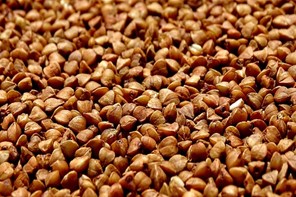
I find this description by Renzenbrink appealing and inspiring for further consideration:
“A field of buckwheat in bloom, with its brilliant colors and honey scent, is very appealing in its mood, but quite different from the glow of a field of grain.”
Unfortunately, we don’t often have the opportunity to see buckwheat in the wild. Here is a short video that shows us buckwheat as well as several other grains. (1)
It is a nice exercise to let your eyes linger for a while on the bright buckwheat blossoms and then on the light, radiant ears of barley. In the background, we can move the thought: a field of buckwheat in bloom with its blaze of color and honey scent is very appealing in mood, but quite different from the glow of a field of grain.
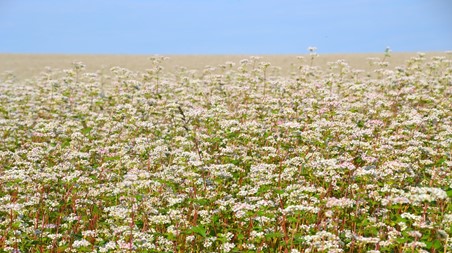
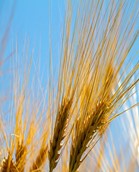
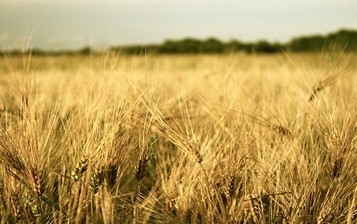
Contemplation exercises in nature, such as these, calm our minds, stimulate our perception, delight us and certainly create a new and appreciative relationship with grain and buckwheat. For those who want to start cooking, I can recommend the above-mentioned book by Udo Renzenbrink with many tried and tested recipes.


0 Comments